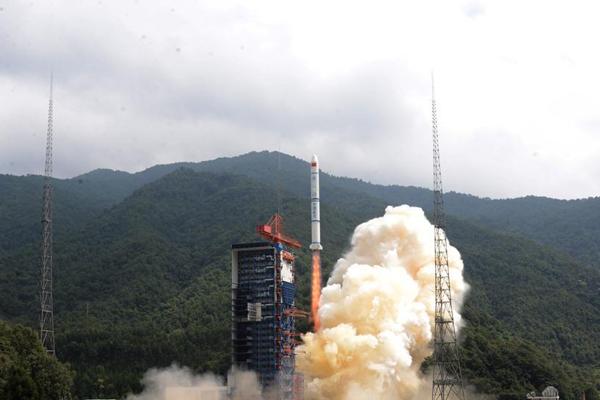
China launches the Yaogan-30 01 satellites on a Long March-2C rocket from the Xichang Satellite Launch Center in Xichang, Sichuan province, Sept 29, 2017.[Photo/Xinhua]
China used a Long March 2C carrier rocket on Sept 29 to lift three satellites, as the nation resumes space launches after a major failure in July.
The rocket blasted off at 12:21 pm at the Xichang Satellite Launch Center in Sichuan province, successfully placing three Yaogan 30-1 satellites into orbit, according to a news release from China Aerospace Science and Technology Corp, the major contractor of the country’s space programs.
Developed by the Chinese Academy of Sciences, the satellites will be used to carry out technological experiments on the electromagnetic environment, the release said.
It said that the launch on Sept 29 was a battle for “the honor and confidence” of China’s space industry, therefore engineers made thorough checks in accordance with their strictest standards.
The mission’s success has shown that the company’s efforts in rectifying problems and improving its rockets’ quality have achieved their goals, and will bring confidence to its workers, the company noted.
This has been the 251st flight of the Long March family and the first in nearly three months since July 2, when the second mission of China’s newest and strongest rocket, Long March 5, failed due to malfunctions.

China launches the Yaogan-30 01 satellites on a Long March-2C rocket from the Xichang Satellite Launch Center in Xichang, Sichuan province, Sept 29, 2017.[Photo/Xinhua]
The failure has affected the country’s space programs as it had to postpone several key missions such as the Chang’e 5 lunar expedition that is set to send a rover to take samples from the moon’s surface and bring them back to Earth.
As China’s mightiest and most technologically advanced launch vehicle, the Long March 5 has a liftoff weight of 869 metric tons, a maximum payload of 25 tons to a low-Earth orbit, and a payload of 14 tons to a geosynchronous transfer orbit. The Long March 5’s payload capacity is about 2.5 times bigger than any other Chinese rocket.
The Long March 5’s first flight was carried out in November at the Wenchang center. Chinese scientists wish to use the rocket to send large probes to the moon, Mars as well as Jupiter. They also plan to use it to transport parts of a manned space station that will start construction around 2019.
Long March 2C was first flown in 1982 and had been used in 41 space flights before Friday’s launch. Its biggest feature is its high reliability. It is the only Chinese carrier rocket that has been launched at all of the country’s three inland launch centers-Jiuquan, Xichang and Taiyuan, according to China Academy of Launch Vehicle Technology, which developed the rocket.
The academy said that the flight on Sept 29 marked the first time that a Long March 2C has carried three satellites. All of its previous missions ferried one or two satellites into space.
